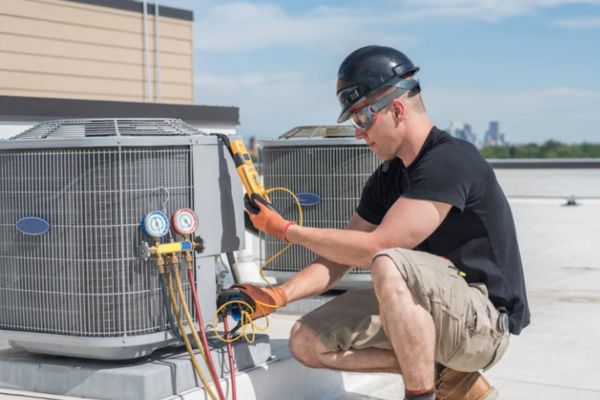Attic HVAC systems are becoming increasingly popular due to their space-saving benefits and practicality in many homes. By placing the HVAC system in the attic, homeowners can utilize this unused space while achieving effective temperature control.
There are several benefits to installing an HVAC system in the attic. For one, it saves valuable space inside the home since the HVAC unit is tucked away above living areas. Additionally, attic installations tend to be more accessible for maintenance, allowing technicians to perform routine servicing easily. Proper installation can also ensure efficient heating and cooling performance throughout the house.
However, attic HVAC systems have their drawbacks. One common issue is air leakage, leading to energy loss and reduced system efficiency. Furthermore, attics are often exposed to extreme temperatures, impacting the system’s ability to function optimally. Managing moisture levels in the attic can also be challenging in some climates, potentially leading to long-term damage or inefficiency.
Cost of Installing Attic HVAC Systems
The cost of installing an attic HVAC system can vary depending on several factors, such as the size of the system, the type of equipment chosen, and the complexity of the installation. On average, homeowners can expect to pay between $5,000 and $20,000 for an attic air conditioning installation project.
Central air conditioning units typically range from $2,500 to $7,500, while ductless mini-split systems can cost between $3,000 and $10,000. Installation costs can range from $3,000 to $6,000 for basic setups, with comprehensive installations rising to $15,000 if additional ductwork or structural changes are needed. Additional costs include insulation, sealing, electrical work, and permits, which can add anywhere from $1,000 to $5,000 to the total.
Energy Efficiency and Attic Insulation
Proper insulation is critical to ensure that your attic HVAC system operates efficiently. Without sufficient insulation, much of the heating or cooling generated by the system can be lost, making the system work harder and driving up energy costs. Choosing a suitable insulation material with a high R-value can help retain energy and keep your home comfortable.
Ventilation and Airflow Considerations
Good ventilation is essential for an attic HVAC system to function correctly. Poor airflow can lead to uneven temperature distribution and increase the risk of moisture buildup, damaging the HVAC system and your home. Ensuring the attic is well-ventilated and air flows freely through the HVAC ducts is important.
Attic HVAC System Maintenance
Like any HVAC system, regular maintenance is vital to keeping your attic unit in good working condition. Scheduling routine inspections and servicing can prevent costly breakdowns and extend the system’s lifespan. Clean filters, check for leaks, and address any minor issues before they escalate.
Modern industrial-style interior with exposed beams, ductwork, and large windows.
Alternatives to Attic HVAC Systems
While attic HVAC systems have advantages, they may not be suitable for every home. Here are some alternative options that provide efficient heating and cooling without the potential downsides of attic installations.
Split Systems with Multiple Indoor Units: Split systems offer zoned temperature control, providing flexibility and comfort by allowing indoor units to be installed in different home areas. However, they can become expensive if multiple units are needed and may require more maintenance.
Ductless Mini-Split Systems: Ductless mini-splits are ideal for homes without existing ductwork. They provide targeted heating and cooling in individual rooms, eliminating duct energy loss. Though efficient, they can be costly to install and may not always fit seamlessly into interior designs.
Basement HVAC Systems: Basements offer a cool, insulated environment for HVAC systems, reducing energy loss. Basement units are also easier to maintain but may take up valuable storage or living space.
Closet or Utility Room Installations: Placing HVAC systems in closets or utility rooms makes maintenance easier and reduces energy loss from long ducts. However, space limitations and potential noise in living areas can be concerns.
Outdoor Packaged Units: Outdoor units combine all HVAC components into a single system, saving indoor space and reducing noise inside the home. However, they are exposed to weather conditions, which may require protective measures and regular maintenance.
Conclusion
Attic HVAC systems offer a practical solution for homeowners looking to save space while maintaining an efficient heating and cooling system. While they have advantages, including easy maintenance access and efficient temperature control, they also come with considerations like insulation, energy loss, and cost. With proper installation and maintenance, an attic HVAC system can effectively manage home comfort. Home Star is your top directory for connecting with trusted HVAC professionals who can guide you through installation, repair, and maintenance for your HVAC needs.


